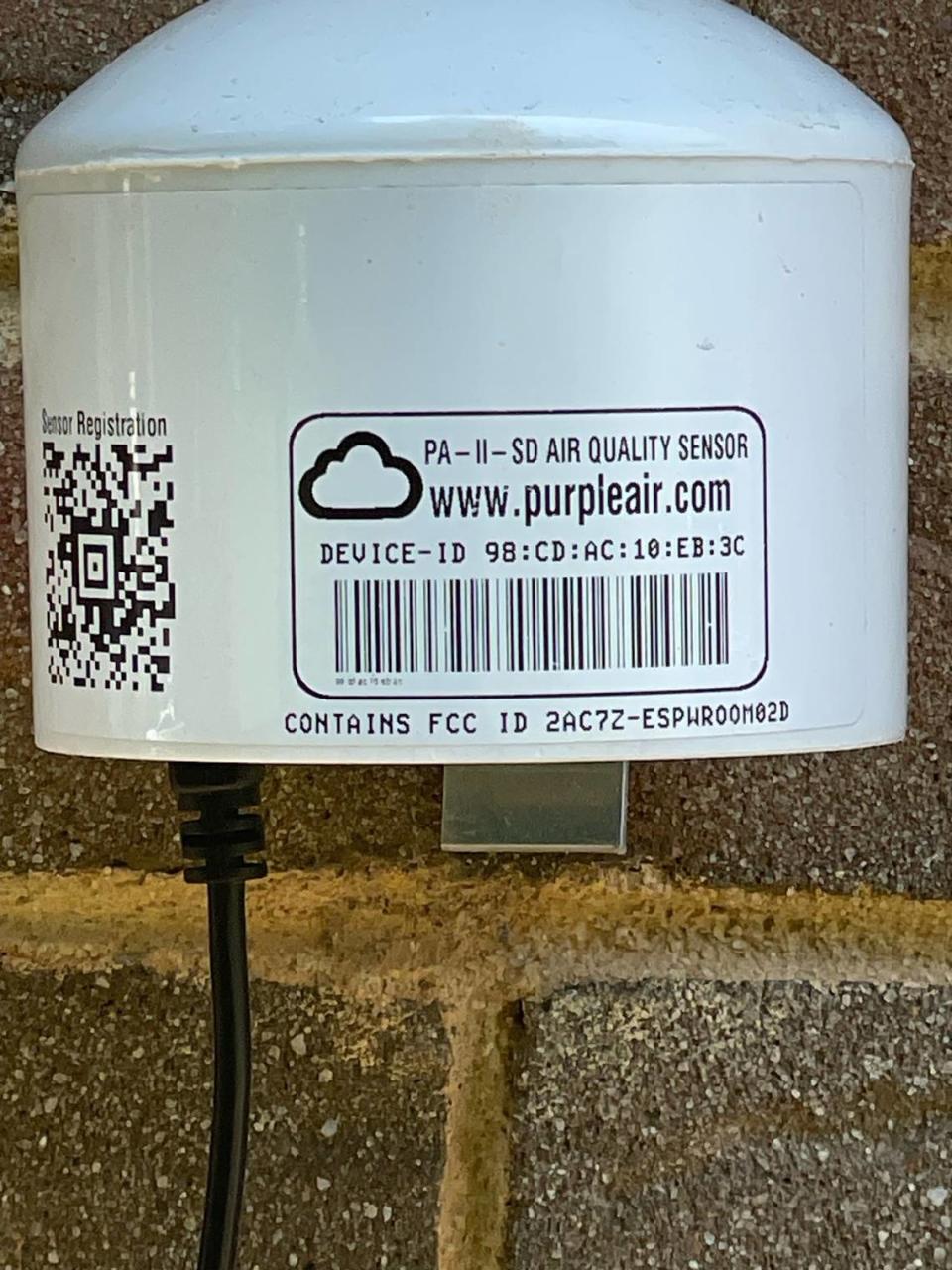The smog is fading in Charlotte, but masks are helpful for some, a health manager says
Over the past week, Canadian wildfires have pushed a stream of smoke down the East Coast, impacting the air quality, even as far south as North Carolina.
In Charlotte, air quality is normally “code green” or “good,” meaning it is safe to enjoy outdoor activities.
As of Friday morning, Charlotte’s air quality index (AQI) borders between “code yellow” and “code orange,” indicating that those who are unusually sensitive to particle pollution should limit time spent outdoors. For Saturday, the forecast reads “code yellow,” with Sunday leading back into the “code green” zone.
The N.C. Department of Environmental Quality reports several counties around the Raleigh area, as well as Mecklenburg, Union and Wake counties, are in “code orange,” and will stay that way until about 8 p.m.
That air quality zone is unhealthy for sensitive groups — including older adults, children, teenagers, and those with heart or lung diseases such as asthma, COPD or high blood pressure. Some health managers recommend wearing masks as a precaution.
What exactly is in the air?
Fine particulate matter — PM2.5 — is an air pollutant that, in high levels, reduces visibility and causes the appearance of hazy air. PM2.5 are particles that are 2.5 microns or less in diameter, more than 20- to 30-times smaller than a strand of human hair, according to the Environmental Protection Agency.
The threat to human health comes because our lungs cannot filter out fine particulate matter. So, while dust or pollen might make our noses itchy and cause us to sneeze, it’s because we’re not inhaling those particles. Fine particulate matter, on the other hand, is more likely to go straight into your lungs or even your bloodstream.
Those who are most sensitive to fine particulate matter pollution should maintain higher diligence in checking air quality resources to make the most informed decisions about spending time outdoors.
Health risks & recommended precautions
Fine particulate matter particles are so tiny they are invisible. But these ozone pollutants are easily in view when haze or smog is present, as seen over the Charlotte skyline on Wednesday.
CleanAIRE North Carolina is a nonprofit that advocates for solutions to climate change and air pollution-related issues such as the impacts of the wildfires. Kirsten Minor, the organization’s health manager, suggests people with heightened sensitivity that cannot avoid going outside when the air quality is “code yellow” or worse should wear N95 or KN95 face masks to limit pollution inhalation.
During “code orange,” individuals that are otherwise healthy also may become susceptible to the PM2.5 health risks and are advised to avoid strenuous activity — such as jogging outside — says Minor.
Air quality varies dramatically throughout the day, according to Minor. Ozone pollution from transportation sources is highest during the hottest part of the day. CleanAire NC recommends limiting time spent outdoors from 2 p.m. to 7 p.m., especially given the added wildfire pollutants.
Purple air monitors & citizen scientists
Volunteers of CleanAIRE NC work as citizen scientists, installing PurpleAir monitors at their home, to measure the air quality throughout the state.
Ron Ross is a Charlotte-based volunteer. In 2016, he installed a PurpleAir monitor at his home out of curiosity about exposure to vehicular emissions from the freeways near the south Charlotte and Dilworth areas.

Since the effects of the Canadian wildfires have infiltrated the area, Ross and his neighbors postponed a visit to their community garden earlier this week. They wanted to err on the side of caution for those of his group that are among the sensitive population.
Ross reports that his PurpleAir monitor read an AQI of 83 (“code yellow”) on Tuesday and peaked at 154 (“code red”) on Wednesday. As of midday Friday, the monitor reads 108 (“code orange”).
“If someone is looking at personal air sensor data, and they see a high rating, it’s a sign they should dig deeper,” says Megan Green, air quality program manager for Mecklenburg County Air Quality.
Recent concentration of ozone pollution has been uniform around Mecklenburg County, according to Green. However, controlled fires or smoking vehicles can cause the hyper-local levels to fluctuate.
Green suggests that signals from a personal air sensor should be a call to action to look at additional data resources. That way people can make the most informed decision about how to modify their outdoor activity.

Isn’t one measure enough?
The status of air quality in Charlotte — or anywhere for that matter — is a very dynamic situation, according to Green.
Green’s advice is to check the air quality forecast during morning hours to read an early warning for when conditions are suitable to see poor air quality. While the data suggests air quality in the Charlotte area will improve over the weekend, it is important to remain diligent in checking available data in case the status changes.
The AirNow website and app presents current air quality conditions so people can determine whether to go outside for certain activities.
Purple air monitors run by citizen scientists offer an initial glimpse into the air quality in specific parts of the state. However, Green advises that people consult AirNow’s Fire and Smoke Map, as it compiles information from the Mecklenburg County Air Quality monitoring networks and personal air sensors to provide the most comprehensive suite of data.
Future concern
While wildfires in California are more common and typically do not affect the East Coast, Minor says, there is a chance these Canadian wildfires are not an isolated incident.
Above all, both Green and Minor advise everyone to stay informed and keep an eye on air monitoring resources.

 Yahoo Sports
Yahoo Sports 